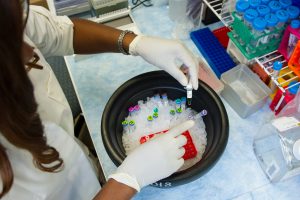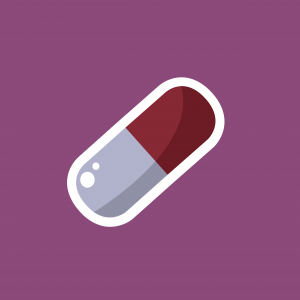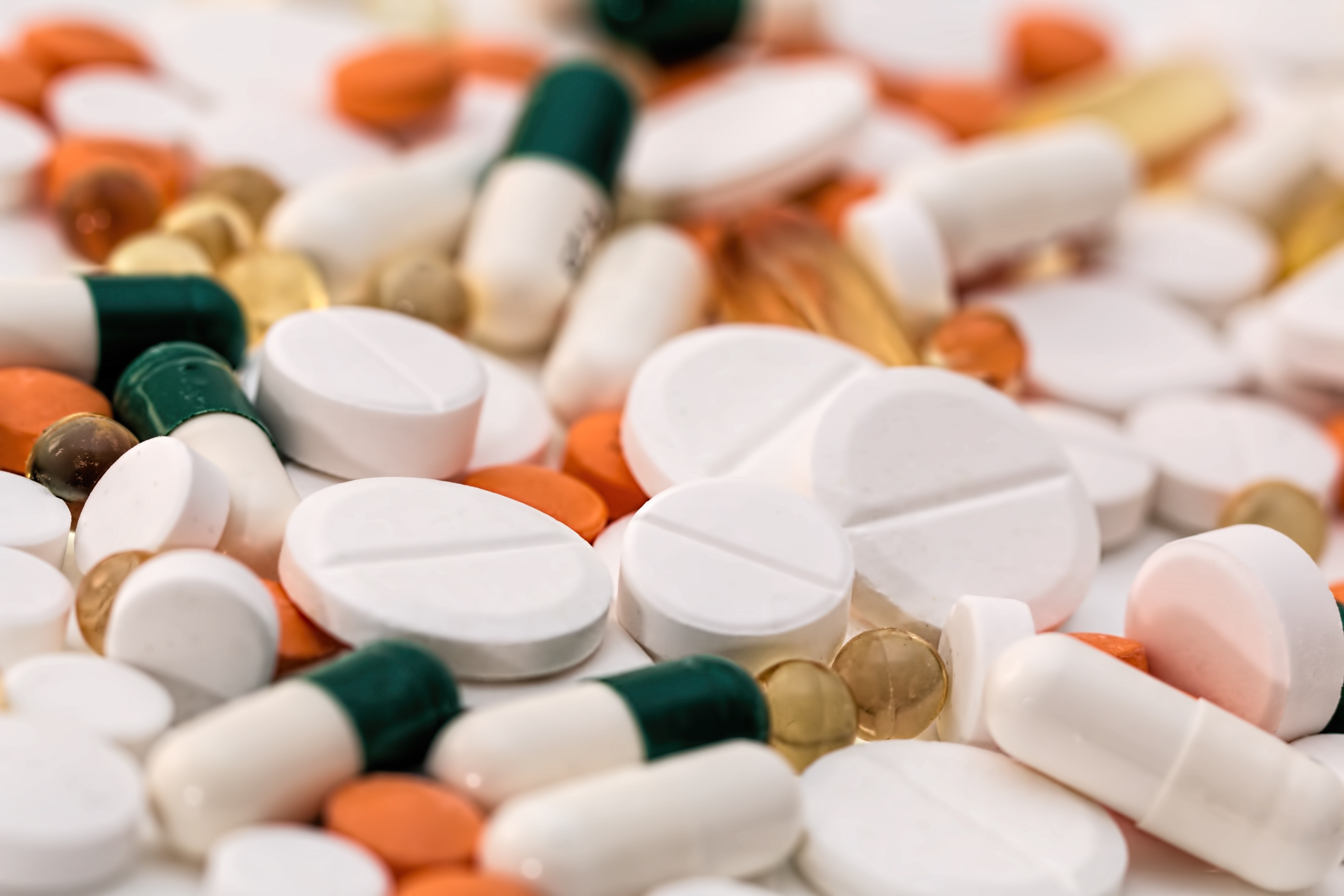To the average person, antibiotic resistance may not sound like that big of a problem, at least not one that can’t be easily solved. But there is no “quick fix.” And many medical researchers believe that a rapidly increasing resistance to antibiotics is one of the world’s most pressing health problems.
Since the 1940s, when the first antibiotic, Penicillin, became available to the public, it and other similar “miracle” drugs have been used over and over through the years to fight infectious disease. Unfortunately, this has lead to the mind set that for every infection, there’s an antibiotic that can treat it.
And this public perception, along with the widespread availability of these medications, is slowly creating a host of infections that don’t respond to antibiotics. Simply put … the more they’re used to fight infection, the more resistant the infection becomes.
Recent Bacterial Resistance Alarming
According to an annual World Health Organization (WHO) report, about 14,000 people are infected and die each year due to drug-resistant microbes picked up in U.S. hospitals. More than 2 million Americans are infected each year, and more than half of these infections resist at least one antibiotic.
From 1975 to 1991, the incidence of methicillin-resistant Staphylococcus aureus (MRSA) in U.S. hospitals increased from 2.4 percent to 29 percent. Staph bacteria can cause skin, heart valve, blood, and bone infections that can lead to septic shock and death, showing alarming resistance to the methicillin class of drugs.
As MRSA spreads, the only choice left to doctors is the use of Vancomycin, often called the drug of last resort for infectious diseases. But there are already at least two documented cases in the U.S. just in the last year in which an infection proved resistant to the most powerful antibiotic.
This is particularly devastating for patients with impaired immune systems, like those with cancer and AIDS. About 90 percent of AIDS patients who get multiple-drug resistant Tuberculosis (TB) die.
TB, a bacterial lung infection, has long been responsive to antibiotics. But not anymore. WHO estimates that TB affects a third of the world’s population and kills more than 2.5 million people each year. It is the leading cause of death among infectious diseases.
With an increasing number of TB strains testing resistant to the most powerful antibiotic therapy, New York City at one time was the U.S. city with the highest number of TB infections. Just a short decade ago, NYC had a TB rate of 222 per 100,000 people – more than 20 times the U.S. average. Unfortunately, NYC also cared for the distinction of being the headquarters of the drug resistance problem, with 61 percent of the national caseload in 1991.
It has also been estimated that about 40 percent of pneumococcus germs – the source of sinus and ear infections and often cause bacterial pneumonia, bloodstream infections, and meningitis- are now resistant to penicillin, up from about five percent in the 1980s.
The good news is that NYC’s TB epidemic has decreased in recent years because of programs that closely monitor TB therapy from start to finish. But the problem, though smaller, remains. About five percent of patients at Harlem Hospital have drug-resistant TB, and about two to three percent have multi-resistant strains.
Remember the anthrax scare and the rush by many to stock up on the most powerful antibiotic, Cipro? Here again, research has begun to show an increase in infections resistant to the drug.

Some medical causes of antibiotic resistance
So how does a physician decide if antibiotic treatment is necessary for a patient? Actually, it’s kind of a guessing game. If a doctor isn’t really sure of the source of infection but thinks it’s bacterial, they often prescribe a broad-spectrum antibiotic. However, studies suggest that these super antibiotics are best used for critically ill patients – the ones who need treatment immediately.
The down side to this “broad” treatment is that while it targets the “bad” bug, it also targets “good” bacteria as well. In light of this, physicians are encouraged to use the most “specific” antibiotic they can. But, in order to do this, cultures must be obtained and tested to identify the source. Many times these cultures and tests are not performed due to time constraints, difficulty in obtaining a culture, expense, etc.
Patients should not demand antibiotic prescriptions they might not need. Studies show that doctors often dispense unnecessary antibiotics because patients “think” they need it to get better. Most of the infections antibiotics are prescribed to treat clear up on their own.
According to a 1997 WHO study conducted in Europe in the mid 1990s, many physicians said that patient pressure is the No. 1 reason why they prescribed the wrong antibiotics. In the U.S. 95 percent of the physicians surveyed had seen an average of seven patients in the previous six months who had requested specific drugs as a result of drug company advertising.
WHO’s study concluded that primary care physicians who responded to the survey about their own practice indicated that purulent discharge and diagnostic uncertainty were the most important factors leading to unnecessary prescriptions. The second most common reason was to appease the patient. The study’s findings conclude by suggesting a more aggressive approached
The US Center for Disease Control and Prevention (CDC) estimates that about one-third of the 150 million outpatient antibiotic prescriptions written each year are unnecessary. A majority of these patients suffer from colds and upper respiratory tract infections and other ailments often caused by viruses.
And it can be harmful to take unnecessary antibiotics. Taking the most powerful antibiotics causes bacteria to become resistant. People who have taken antibiotics recently are more susceptible to infections with bacteria that are resistant and may pass them on to family members and friends. It may also reduce the numbers of healthy bacteria in your body, leaving you more susceptible to diarrhea, gas, and bloating.
Still one of the main problems that has allowed the resistant bacteria to spread on a global scale is that many major drug companies are focusing their efforts on finding cures for chronic diseases like Alzheimer’s, heart disease and other chronic disease. For example, most scientific breakthroughs have been largely confined to finding a cure for cancer and finding an anti-viral agent that could be used in the treatment of AIDS.
What role does the agricultural use of antibiotics play in this dilemma?
While medical misuse of antibiotics is thought to be largely responsible for the increase in antibiotic resistance, another major source is thought to be the current high agricultural use. Some of our most powerful antibiotics are mixed into the daily feed for our farm animals.
About 50 percent of antibiotic production in the U.S. is used to prevent disease, encourage growth, and treat sick livestock, as well as poultry. Penicillin and Tetracycline make up about 80 percent of that total. Some antibiotics are also used as crop pesticides.
But although the U.S. government, along with the FDA, etc., has requested studies into this issue, we are not aware of any formal action that has yet been taken in an attempt to solve these health threats from America’s heartland.
What about the use of antibacterials in the home?

Unlike antibiotics, antibacterials are most often found in products such as detergents, soaps, health and skin care products, and household cleaners. But because of their rapid killing effect, the non-residue producing antibacterial agents are not believed to create resistant bacteria.
Some experts believe that the use of these agents create a false sense of security that may cause people to lay off their personal hygiene habits.
It should always be remembered that most bacteria are harmless and in many cases, even beneficial. However, constant use of disinfecting agents tends to disrupt the normal bacteria that act as barriers against invading pathogens. This could possibly cause a shift in the bacterial population and create a place for disease-causing bacteria to enter and establish infection.
On the subject of hand washing, the Alliance for the Prudent Use of Antibiotics states that in most cases, washing with regular soap and water and rinsing with running water, followed by thorough drying is still considered the most effective way of preventing disease transmission
What’s being done to combat the problem?
Increasing public awareness of the hazards associated with the misuse of antibiotics is one of the most important methods currently being utilized by organizations like the American Medical Association and many other concerned groups. This educational campaign has focused on raising physician awareness on the dangers of inappropriate antibiotic over prescribing and encouraged to share this information with their patients.
And there has been some success in that area. In a survey conducted by the National Ambulatory Medical Care, about 3,000 office practitioners were asked to record patient visits, and what they prescribed, for a week.
In the 1989-1990 survey, the average annual number of antimicrobial drugs prescribed in offices to children under age 15 was 45.5 million. A decade later, the number had dropped to 30.3 million. The rate of prescriptions fell from 838 to 503 – a decrease of 40 percent. The rate of children’s visits to the doctors that resulted in antibiotic prescriptions fell from 330 per 1,000 visits to 234 per 1,000 visits – a decrease of 29 percent.
But although doctors are responsible for writing the prescriptions, the support of many other groups are also needed to attack this problem from all fronts – from global organizations to federal agencies and even state and local health departments. But, ultimately, success relies on education. These include policy makers, parent and consumer groups, pharmacist and nurse organizations, and health plans and managed care organizations.
By increasing public awareness of the potential severity of these antibiotic -resistant infections, perhaps more public pressure will result in an adequate amount of funding being appropriated for research into a new class of super drugs. Sadly enough, scientists say that much of the funding needed now for research and development is being used to investigate more chronic diseases.
Some basic guidelines for antibiotic use
- With cold and flu season officially here, clinics will be filled with patients looking for some relief. But antibiotics do not work against colds or flu. They are caused by viruses. Do not request antibiotics from your doctor unless you have a specific bacterial infection.
- Most sore throats are also caused by viruses. One exception is strep throat, which is caused by bacteria. A throat culture can diagnose strep and antibiotic treatment is needed.
- Viruses are almost always the culprit behind most coughs and bronchitis. However, if symptoms last for more than two weeks or if the patient has a respiratory condition, they need to see a doctor to determine if an antibiotic is needed.
- Sinus infections are one of the most common complaints seen by physicians. These can be caused by bacteria or viruses. One common misconception is that if the symptoms include yellow or green mucus, it’s a bacterial infection. Not necessarily. A virus could be the cause. However, antibiotics should only be used for a SEVERE infection, or one that lasts more than two weeks because that one is probably being caused by bacteria.
- When an antibiotic is prescribed, it is extremely important to take ALL of the doses as directed. Too many people quit taking their prescription when they begin to feel better. Some then decide to save the remaining meds for the “next” time that they get sick. However, if the full round of medication is not taken, the “remaining” bacteria could bring the infection back worse than ever. The best defense against an infection is to take the prescribed number of doses on the prescribed schedule. (However, one problem that should be noted here is that in a recent survey of patients who have been subscribed antibiotics, many say they were never told the importance of finishing the medication.)
- Use regular soap and water for washing. Avoid products with antibiotic ingredients on the labels.
- Eat live culture yogurt or probiotics containing acidophilus bacteria after finishing a course of antibiotic treatment. These products will help build up the healthy bacteria in your body.
- You can buy meat and eggs from animals that weren’t fed antibiotics. This reduces farm use, and promotes farming that relies on clean living conditions for the animals.


